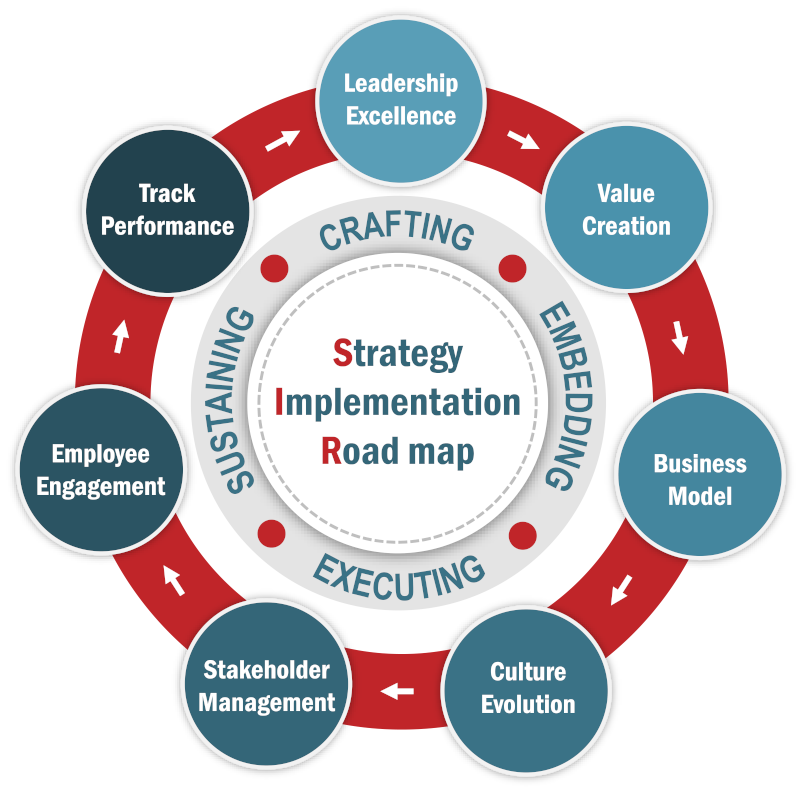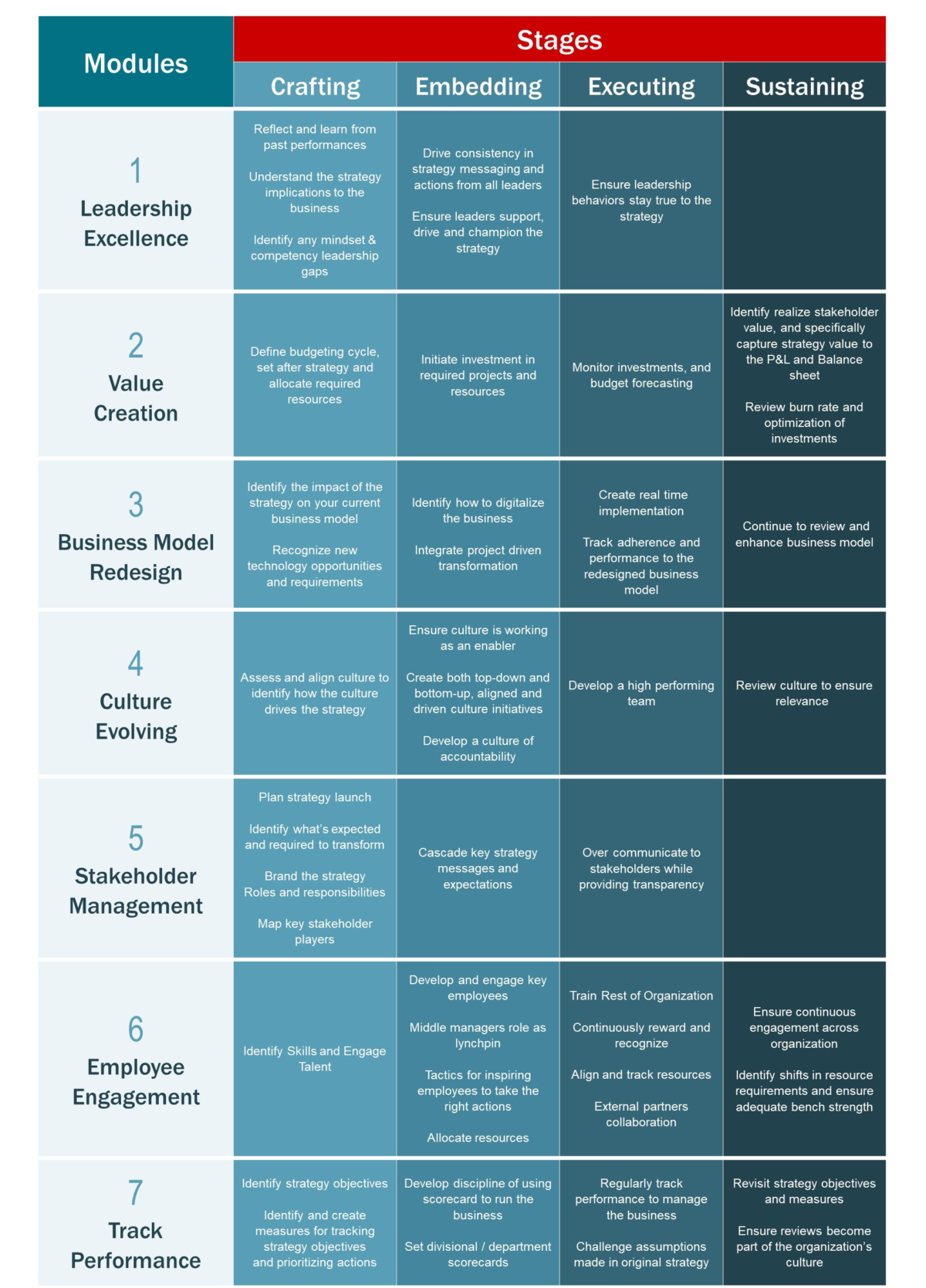Strategy Implementation Road Map (SIR)
Too often leaders are asked to implement strategy but are not provided the road map to do so. The Institute has developed the Strategy Implementation Road Map(C) (SIR), as part of its body of knowledge. The SIR outlines the training course and provides a step-by-step guide on “how” to implement a strategy. It covers the key areas that an implementation professional needs to know and outlines the required skills.
SIR is circular as you can start anywhere. It consists of the seven components required to be successful in strategy implementation. The components make up the modules for the certification to become a Strategy Implementation Professional.
The center of SIR shows the four stages for the seven components:
Crafting
Leaders start to prepare for the implementation by considering how to communicate and engage the whole organization. This includes focusing on gaining awareness of the new strategy, explaining why the organization needs to change, aligning activities, allocating resources, assessing the organization culture, identifying measures and new skills people require among others.
Embedding
After the strategy is launched, leaders focus on gaining traction, building momentum and changing the way it operates. They do this by synchronizing projects, allocating budgets to strategic initiatives, aligning roles and responsibilities, identifying resource requirements, adopting technology and developing the discipline to take the required and corrective actions.
Executing
The focus is to now ensure the organization continues to transform to the new way of working so as to deliver the strategy. By this point, the new strategy is becoming the current way of working. Key activities include ensuring key business decisions and financial investments are positioned to the strategy, reviewing external partners’ performance, regularly reviewing actions internally, supporting middle managers and leveraging measures to drive the implementation.
Sustaining
The financial benefits of the strategy now start to flourish as the organization completes its implementation. The time this takes for each organization of course varies depending on the strategy, culture and business. Activities in this stage include reviewing the business model, reviewing changes to the initial strategy and recognizing and adapting to shifts in trends and culture.
“If in a strategy meeting you don’t experience discomfort, you are not doing strategy.
Strategy is painful.”– Antonio Nieto-Rodriguez & Robin Speculand


